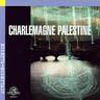 Charlemagne Palestine's monolithic 71 minute organ riff is a sensual, pleasure inducing drone. The crisply sparkling sonority creates a sense of drift, a foreword carrying motion propelled by colliding tones. Buoyed by slow changes that create illusions of movement, the experience of listening to Schlingen-Blangen is one of floating between parallel worlds of harmony and noise.
Charlemagne Palestine's monolithic 71 minute organ riff is a sensual, pleasure inducing drone. The crisply sparkling sonority creates a sense of drift, a foreword carrying motion propelled by colliding tones. Buoyed by slow changes that create illusions of movement, the experience of listening to Schlingen-Blangen is one of floating between parallel worlds of harmony and noise.
Schlingen-Blangen evolved out of a number of events Charlemagne held in L.A. in 1970 and ’71 that he called “Meditative Sound Environments.” In these performances he would sustain a chord on an organ in a Unitarian church by inserting pieces of cardboard between the keys and letting it play all night, adjusting the stops here and there to make only slight changes. In this recording, dated from 1988 and made in the church of a small Dutch village called Farmsum Delftzijl on the North Sea, the same approach is used. An initial chord and its timbre was chosen and then left to sing for the duration of the recording.
If this was the kind of organ music played during church I might be persuaded to attend. There is a sacred feel to it and it has certainly done more for my spiritual well being than most sermons ever have. While meditative, it isn’t exactly calm, though it has a calming effect. It demands attention and gets it by pushing aside the chattering thoughts of the trivial everyday mind. While it does change, it makes an impression of constancy because Charlemagne never gives the organ a chance to breathe. The organ is continually exhaling a propulsive blast of oscillating timbre, filling up space, seeping into everything. It starts abruptly and ends abruptly. In between there is a quick arc of sinuous consonance, meted by an ennervating discord, and finally, release. The raw physicality of the work stimulates the senses of the body while the mind trying to probe it intellectually remains embroiled in paradox; these are the twin joys of the piece.
samples:
Read More

